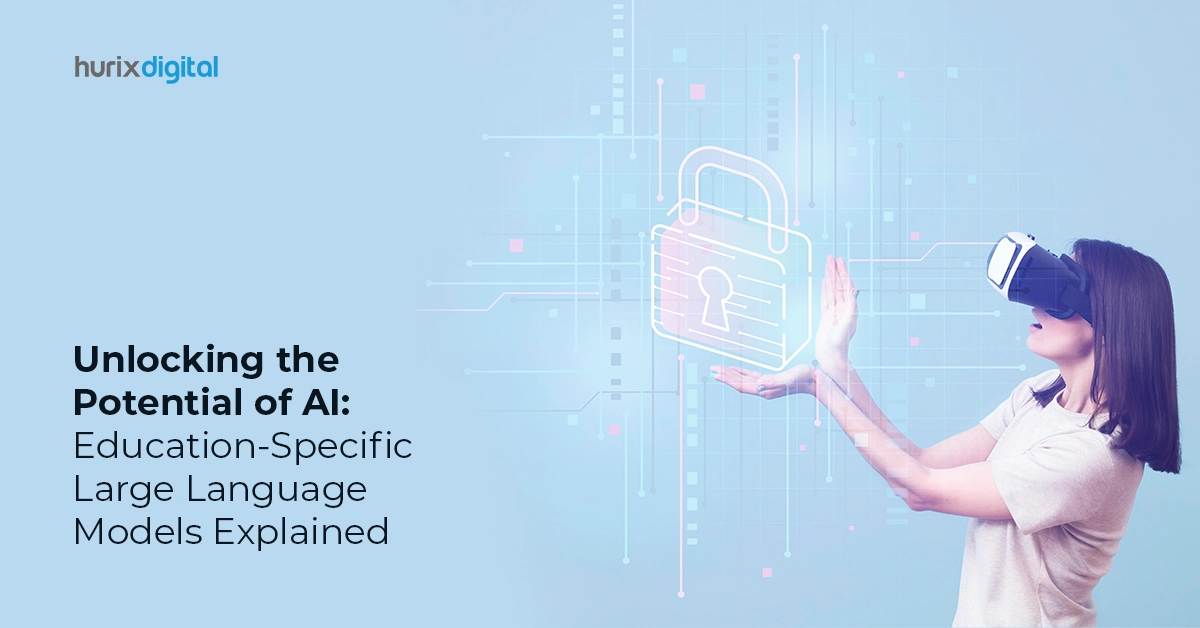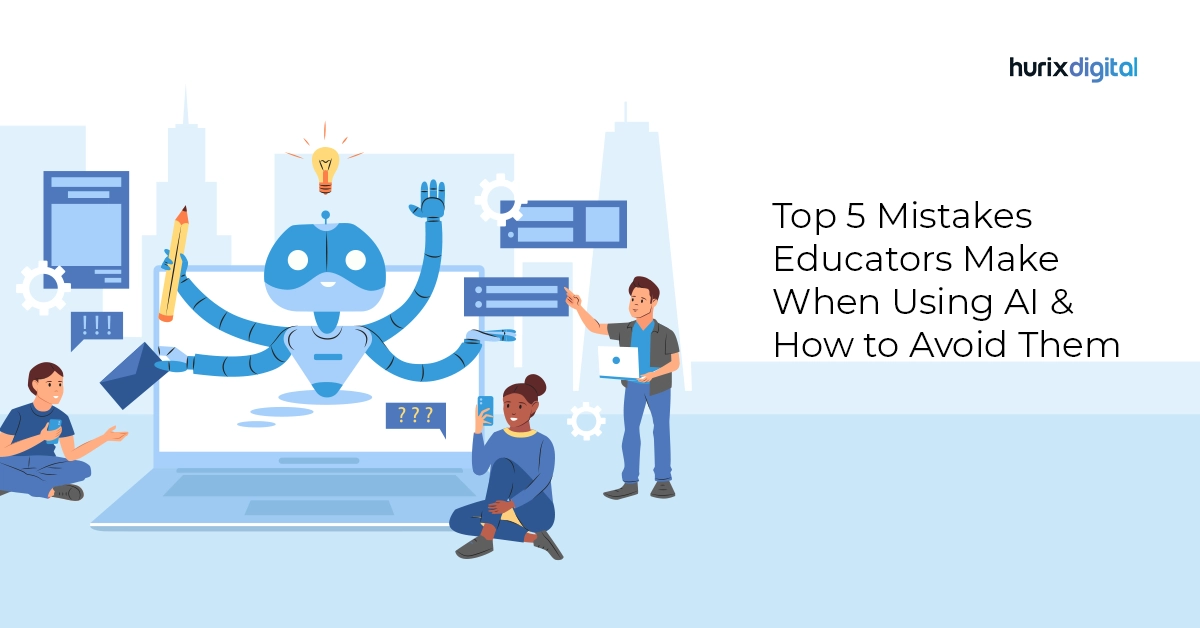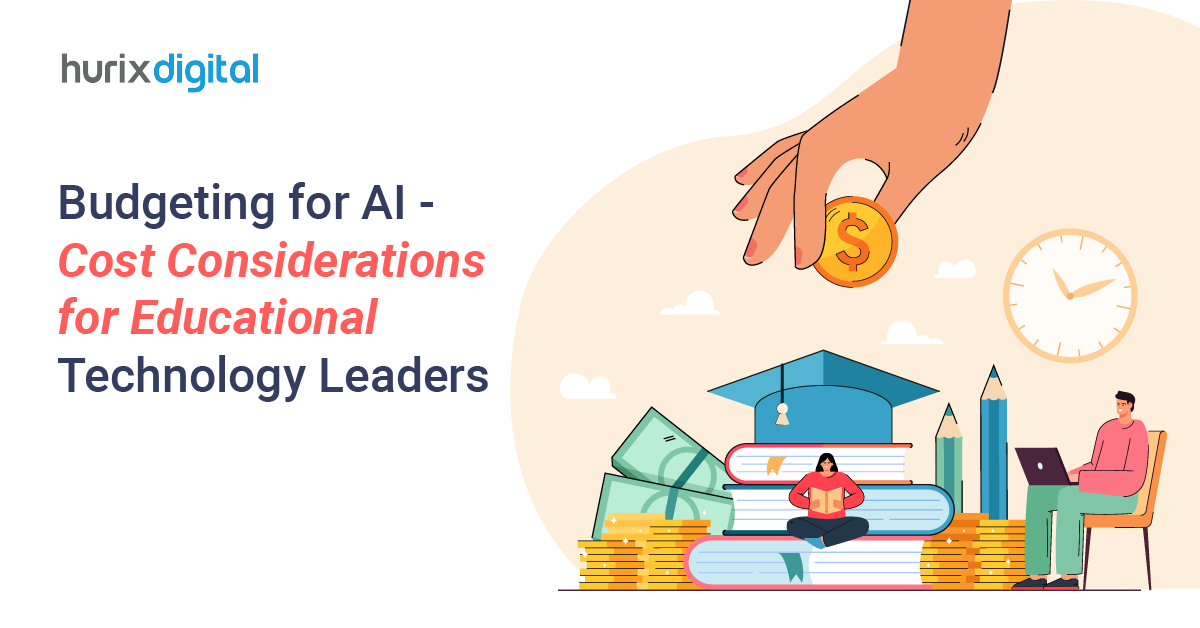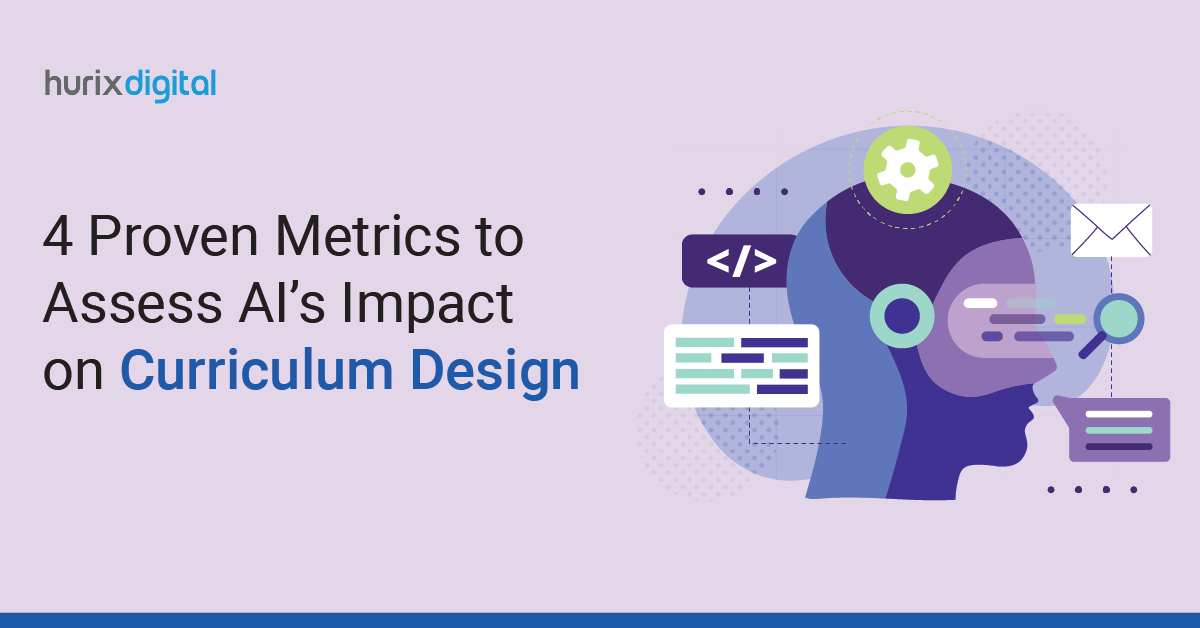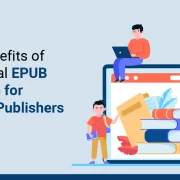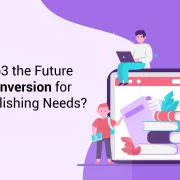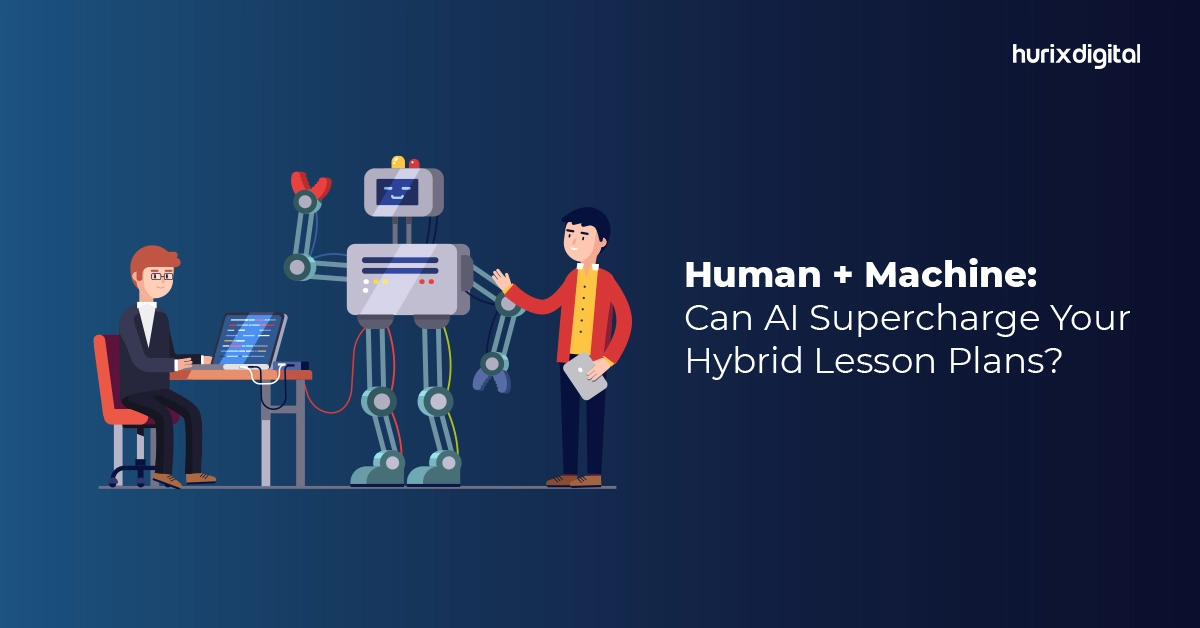
Human + Machine: Can AI Supercharge Your Hybrid Lesson Plans?
Summary
Examine how AI can enhance hybrid lesson plans by integrating human and machine learning capabilities to create more effective and engaging educational experiences.
Gone are the days of AI being solely associated with robots and futuristic sci-fi. In the realm of education, AI encompasses a diverse range of tools and technologies designed to enhance the learning experience.
The education landscape is constantly evolving, and the rise of Artificial Intelligence (AI) presents exciting possibilities for educators. In today’s hybrid classrooms, where physical and virtual learning spaces converge, AI can be a powerful tool to enhance your lesson plans and create engaging learning experiences.
Table of Contents:
- AI in the Classroom: Beyond the Buzzwords
- The Human Touch Remains Essential
- Implementing AI in Hybrid Education Models
- Embrace the Future of a Hybrid Classroom
AI in the Classroom: Beyond the Buzzwords
From adaptive learning platforms that personalize content based on individual student needs to virtual reality simulations that bring theoretical concepts to life, artificial intelligence in education offers a range of possibilities for hybrid classrooms.
Imagine a virtual assistant that personalizes learning pathways for each student, identifies knowledge gaps in real-time, and recommends engaging resources tailored to individual needs. AI can analyze vast amounts of data, providing educators with insights into student progress and learning styles and empowering them to make data-driven decisions.
Here’s how AI integration can benefit the education environment:
1. Boosting Personalization and Differentiation
One of the biggest challenges in hybrid classrooms is catering to individual learning styles and paces.
AI-powered tools can analyze student data, including performance on quizzes, assignments, and participation levels, to create personalized learning paths. This fosters deeper understanding, boosts engagement, and allows you to focus your in-person time on targeted support and group activities.
Imagine an AI-powered education assistant suggesting additional practice problems for students struggling with a concept while offering enrichment activities to those who grasp it quickly. This adaptive learning approach ensures all students are challenged and supported at their level, maximizing their learning potential.
2. Enhancing Engagement and Interactivity
Keeping students engaged, especially in the virtual realm, can be tricky. AI-powered platforms can gamify learning, incorporating points, badges, and leaderboards to motivate students. These elements not only boost motivation but also enhance critical thinking, problem-solving, and collaboration skills – all crucial for 21st-century learners.
Imagine a virtual science lab where students conduct experiments through simulations or a history lesson where they interact with chatbots representing historical figures. These immersive experiences not only make learning fun but also deepen understanding and retention.
Hence, this contributes to strengthening the relationship between AI and student engagement.
Also Read: The Do’s and Don’ts of AI in Education: 5 Mistakes Educators Should Avoid and How to Overcome Them!
3. Streamlining Administrative Tasks and Feedback
Let’s face it: teachers have limited resources.
AI can automate tedious tasks like grading quizzes, scheduling appointments, and providing basic feedback on assignments. This frees up valuable time for you to focus on personalized interactions, providing meaningful feedback, and addressing individual needs.
Imagine an AI assistant grading multiple-choice questions while you offer tailored guidance to students struggling with essay prompts. This division of labor empowers you to personalize your teaching and make the most of your time.
4. Creative Possibilities and Content Curation
AI can be your creative partner, generating engaging content that complements your lesson plans.
Imagine an AI tool suggesting relevant videos, articles, and simulations to supplement your lecture. This provides valuable insights into individual learning patterns, strengths, and areas of difficulty. You can then leverage this data to personalize your instruction, provide targeted support, and identify students who might need additional help.
Or, picture an AI-powered platform creating blended learning journeys that combine text, audio, and visuals to cater to diverse learning preferences. This access to rich and varied content keeps lessons fresh and caters to different learning styles.
5. Addressing Equity and Accessibility
AI can bridge the digital divide and ensure equitable access to education. Text-to-speech tools can assist students with reading difficulties, while translation software can remove language barriers.
Student data is precious. Ensure the chosen AI tools have robust data security measures in place and involve students and parents in discussions about data usage.
Imagine an AI assistant providing real-time captions for lectures or translating written materials into a student’s preferred language. These features create inclusive learning environments where all students can thrive.
6. Virtual Reality and Immersive Experiences
Abstract concepts can be difficult to grasp, especially in a hybrid setting where physical demonstrations might be limited. AI-powered VR technology can bridge this gap by transporting students to immersive virtual environments.
Imagine exploring the depths of the ocean, dissecting a virtual frog, or walking through historical landmarks – all from the comfort of their homes. These immersive experiences not only solidify understanding but also spark curiosity and make learning truly unforgettable.
The Human Touch Remains Essential
It’s important to remember that AI is not a replacement for teachers. AI can automate tasks, personalize learning, and provide valuable data. Still, it cannot replicate the human connection, critical thinking skills development, and social-emotional learning that are essential for holistic development.
Use AI to free yourself from tedious tasks and focus on what you do best: building relationships with students, guiding their learning, and inspiring them to think critically.
Implementing AI in Hybrid Education Models
So, how can you start incorporating AI into your hybrid lesson plans?
Begin by exploring educational technology platforms that offer AI-powered features aligned with your teaching style and curriculum.
Experiment with different tools, from personalized learning platforms to gamified learning apps, and find what works best for you and your students. Remember, successful AI integration involves careful planning, training, and ongoing evaluation to ensure it enhances, not hinders, the learning experience.
Also Read: Top 10 AI Trends Reshaping the World of Education in 2024
Embrace the Future of a Hybrid Classroom
The future of education is hybrid, and AI is poised to play a significant role in this transforming landscape. By embracing AI as a tool to personalize, engage, and empower your students, you can create dynamic and effective hybrid lesson plans that supercharge learning and prepare your students for success in a tech-driven world.
At Hurix Digital, we believe that it’s essential to know that educators need to be comfortable and confident using AI tools. We provide the necessary guidance in training and support to ensure teachers can leverage AI effectively in their lesson plans, which is of paramount importance.
Remember, the human-machine partnership holds immense potential to revolutionize education, and it’s up to educators to harness this power and shape the future of learning.

Senior Vice President – Business Development
Over 25 years of experience in the edtech and workforce learning industry with strong skills in Business Development, Customer Relationship Management (CRM) and Strategy.
